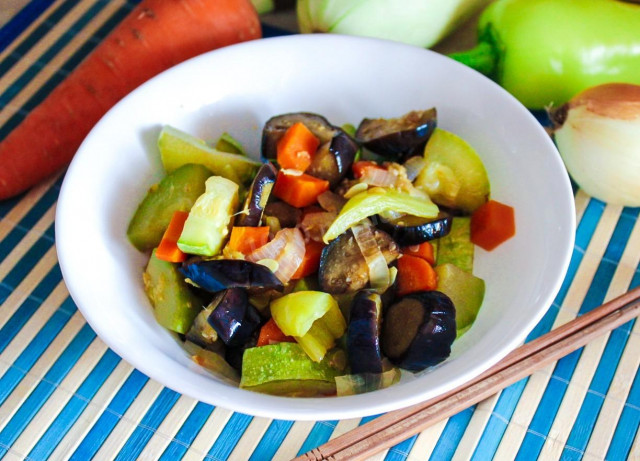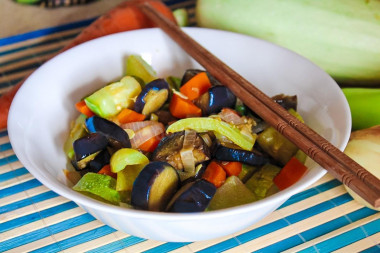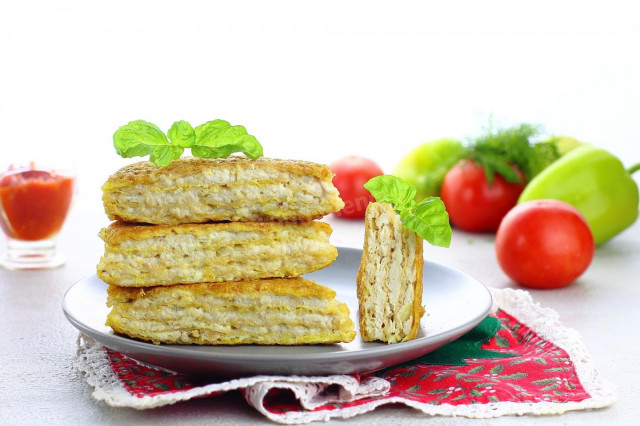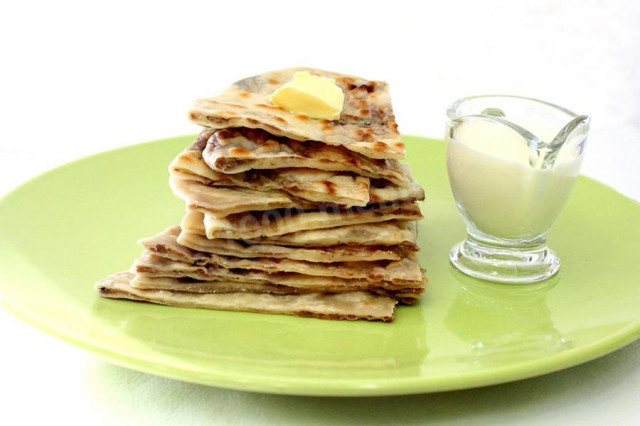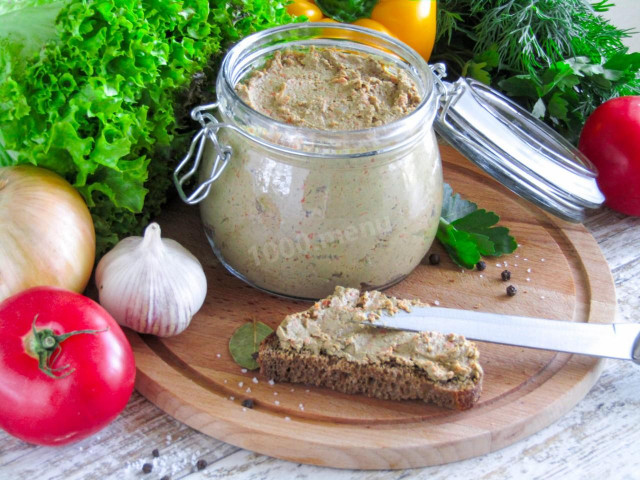Composition / ingredients
Step-by-step cooking
Step 1:
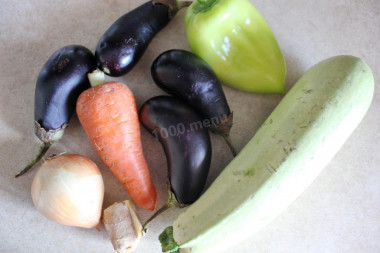
How to make vegetables in sweet and sour sauce in Chinese? Prepare the products. Vegetables for this dish are suitable for any, I took eggplant, zucchini, pepper, carrots and onions. You can also take string beans, peas, cauliflower, broccoli. Thoroughly wash all vegetables under running water.
Step 2:
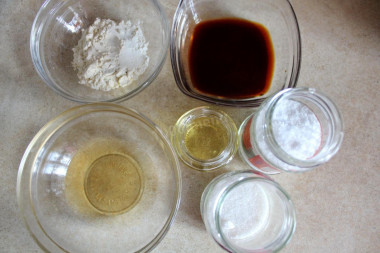
Prepare also the products for the sauce — starch, soy sauce, apple cider vinegar, sugar, salt, vegetable oil. Any starch will do, instead of apple cider vinegar, you can use lemon juice or wine vinegar, take any vegetable oil as well, but it will be especially delicious with aromatic — olive, sesame.
Step 3:
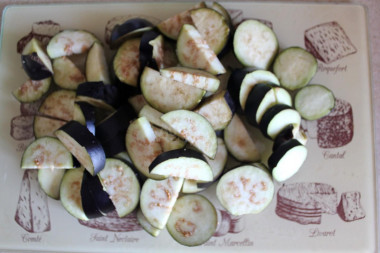
Cut the eggplant into large pieces — rings or half rings. Add salt and leave for 10 minutes until they release the juice. Along with the eggplant juice, the bitterness will also go away.
Step 4:
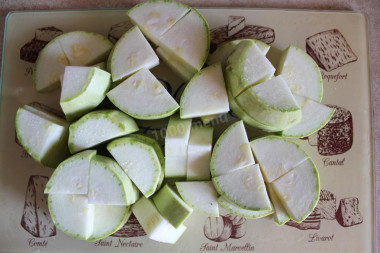
At this time, take care of the squash. Cut it also into large pieces, the size of eggplants.
Step 5:
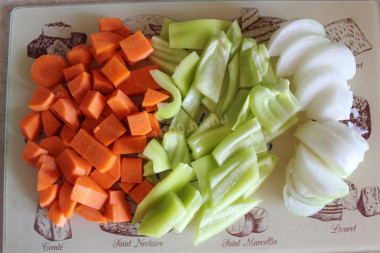
Then peel the carrots, onions, and peppers. Cut the carrots into medium-sized cubes. Pepper — into large pieces in the form of wide short strips. Cut the onion in half, and then in half rings.
Step 6:
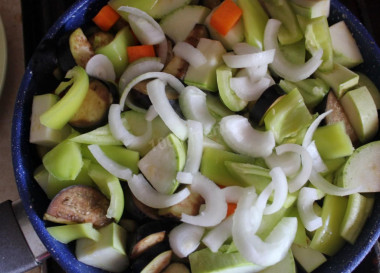
Pour the vegetable oil into a deep frying pan, heat it up. Wipe the eggplant from the juice. Put the eggplants, carrots and zucchini in the pan. Fry them a little over high heat, not forgetting to stir. Then, when the vegetables are lightly browned, add pepper and onion. Fry the vegetables for a few more minutes.
Step 7:
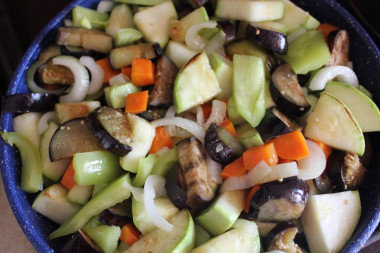
Then turn down the heat, add some hot water and leave the vegetables to simmer. Meanwhile, get busy with the sauce.
Step 8:
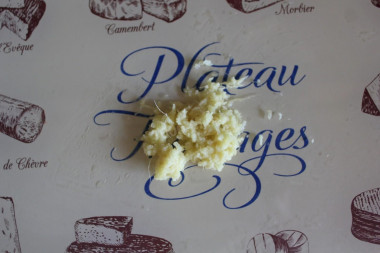
Peel the fresh ginger and grate it on a fine grater.
Step 9:
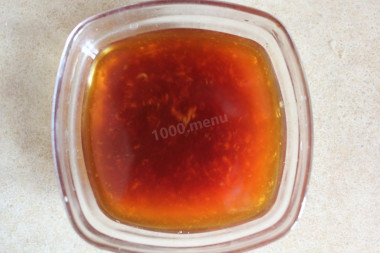
Add ginger, apple cider vinegar, sugar, starch, salt to the soy sauce and mix everything thoroughly. Pour the resulting sauce to the vegetables in a frying pan.
Step 10:
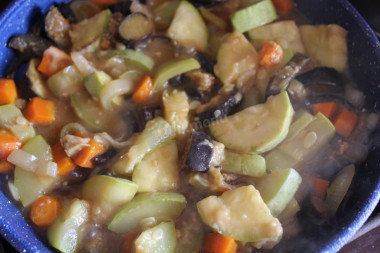
Mix the vegetables well with the sauce and simmer them until tender. The cooking time will depend on your preferences. If you like soft vegetables, then simmer longer, for slightly crispy vegetables, the al dente state is less. Serve the finished dish to the table either immediately hot or in a cooled form. Enjoy your meal!
In this recipe, vegetables can be taken any fresh in season. For example, cauliflower, broccoli, asparagus beans, celery root, Brussels sprouts. You can also use frozen vegetables individually or in mixtures. In this case, the cooking process will be greatly accelerated.
Vinegar can also be taken from rice or ordinary, or even lemon juice, if there was no vinegar at home. Apple of course will be the most useful.
Instead of sugar, you can add stevia powder. In some recipes, honey is recommended, but after heating, honey does not bring any benefit, and even vice versa. Therefore, I would not recommend honey.
If you don't have fresh ginger at home, you can replace it with dry powder.
Instead of starch, you can use any flour and even gluten-free and it will also turn out well.
Please note that in some cases there is no need to remove the bitterness from eggplants - usually young vegetables are not bitter, as well as some special varieties of them.
When adding soy sauce to a dish, it is worth considering that it has a rather salty taste. Reduce the total amount of salt, otherwise you risk over-salting.
Important! An incorrectly selected frying pan can ruin even the best recipe. All the details on how to choose the perfect frying pan for different dishes read here .
Caloric content of the products possible in the composition of the dish
- Zucchini - 23 kcal/100g
- Sweet pepper - 27 kcal/100g
- Carrots - 33 kcal/100g
- Dried carrots - 275 kcal/100g
- Boiled carrots - 25 kcal/100g
- Eggplant - 24 kcal/100g
- Ginger - 80 kcal/100g
- Dry ginger - 347 kcal/100g
- Pickled ginger - 51 kcal/100g
- Soy sauce - 51 kcal/100g
- Granulated sugar - 398 kcal/100g
- Sugar - 398 kcal/100g
- Starch - 320 kcal/100g
- Vegetable oil - 873 kcal/100g
- Salt - 0 kcal/100g
- Water - 0 kcal/100g
- Onion - 41 kcal/100g
- Apple cider vinegar - 14 kcal/100g

